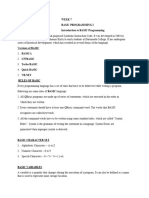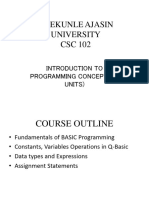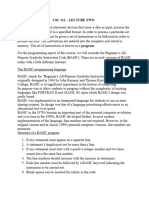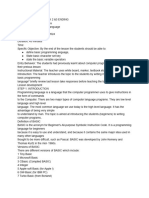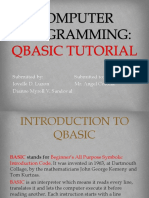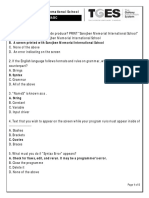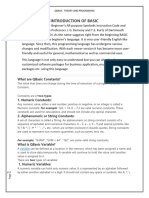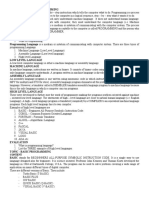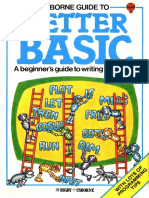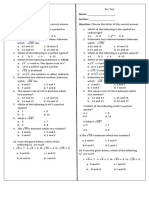0% found this document useful (1 vote)
44 views9 pagesIntro. To Problem Solving With Basic 2
The document provides an introduction to the BASIC programming language, detailing its origin, features, character set, variables, constants, expressions, operators, and statements. It explains the types of variables and constants, the syntax of various BASIC statements such as LET, INPUT, and PRINT, and includes examples of simple BASIC programs. The document serves as a foundational guide for understanding and using BASIC for problem-solving in programming.
Uploaded by
DannyCopyright
© © All Rights Reserved
We take content rights seriously. If you suspect this is your content, claim it here.
Available Formats
Download as DOCX, PDF, TXT or read online on Scribd
0% found this document useful (1 vote)
44 views9 pagesIntro. To Problem Solving With Basic 2
The document provides an introduction to the BASIC programming language, detailing its origin, features, character set, variables, constants, expressions, operators, and statements. It explains the types of variables and constants, the syntax of various BASIC statements such as LET, INPUT, and PRINT, and includes examples of simple BASIC programs. The document serves as a foundational guide for understanding and using BASIC for problem-solving in programming.
Uploaded by
DannyCopyright
© © All Rights Reserved
We take content rights seriously. If you suspect this is your content, claim it here.
Available Formats
Download as DOCX, PDF, TXT or read online on Scribd
/ 9
